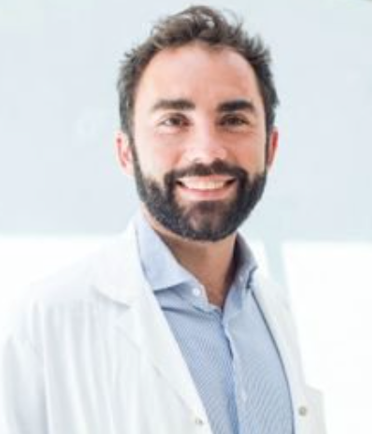La neuromodulacion de raíces sacras es una técnica eficaz para el tratamiento de la Disfunción Miccional Crónica (DMC), refractaria a tratamientos convencionales. En la actualidad están surgiendo nuevas indicaciones en el ámbito urológico, como el dolor pélvico crónico y la cistitis intersticial. Diversos grupos de cirujanos digestivos están optando por esta técnica para el tratamiento de patología rectal (estreñimiento, disfunción esfinteriana). Este trabajo aporta nuestra experiencia en el tratamiento de pacientes con DMC y los resultados comparativos al año del implante de todos los pacientes.
Material Y MétodosDesde diciembre de 1998 a julio del 2003 hemos realizados 18 implantes definitivos de neuromodulacion. La indicación principal fue la DMC, en un 62,5% de los pacientes. El seguimiento de los pacientes lo realizamos al mes, tres meses, y posteriormente cada seis meses. Este se realiza mediante diario miccional y cuestionario de calidad de vida. El implante del electrodo en los 16 primeros pacientes se ha realizado mediante cirugía abierta, mientras que los 2 siguientes se ha colocado el electrodo mediante técnica percutánea, utilizando el kit “Tined Lead”.
ResultadosComparamos resultados al año del implante en todos los pacientes. Se han realizado 18 implantes de neuromodulación de los cuales 14 (77,7%) han sido en mujeres y 4 (22,3%) en varones. La edad media es de 52,56 años. La indicación del implante en un 72,2% de los pacientes fue por DMC, un 22,1% por incontinencia mixta (urinaria y fecal), y un 5,5% fue por cistopatía intersticial. La mejoría de los síntomas al año del implante, medidos por el calendario miccional y el cuestionario de calidad de vida fue de 76,4%. La mejoría clínica fue mayor en los pacientes con síntomas de urgencia, que los pacientes con predominio de la sintomatología de vaciado.
Sacral root neuromodulation is an effective technique for the treatment of Chronic Micturition Dysfunction (CMD) refractory to conventional therapy. New indications such as chronic pelvic pain and interstitial cystitis are currently making their way within the urologic setting. Several groups of gastric surgeons are now choosing this technique for the management of rectal diseases (constipation, sphincter dysfunction). This paper contributes our experience in the treatment of patients with CMD and the comparative results at one year from implant in all patients.
Material And MethodsFrom December 1998 through July 2003, 18 neuromodulation definite implants were performed. The main indication was CMD in 62.5% patients. Follow up of patients was done at one month and three months, and every six months thereafter. Follow up is conducted through a micturition diary and QoL questionnaire. Electrode implant in the first 16 patients was achieved by open surgery. The next 2 patients had the electrode placed by a percutaneous technique using the “Tined Lead” kit.
ResultsResults at one year after implant were compared in all patients. The total number of neuromodulation implants placed was 18, 14 (77.7%) of which were women and 4 (22.3%) men. Mean age was 52.56 years. Implant indication was CMD in 72.2% patients, mixed incontinence (urinary and faecal) in 22.1%, and interstitial cystic disease in 5.5%. Symptoms improvement at one year from implant, as determined by a micturition diary and QoL questionnaire was 76.4%. Clinical improvement was greater in patients with urgency symptoms than in patients with predominance of voiding symptoms.









